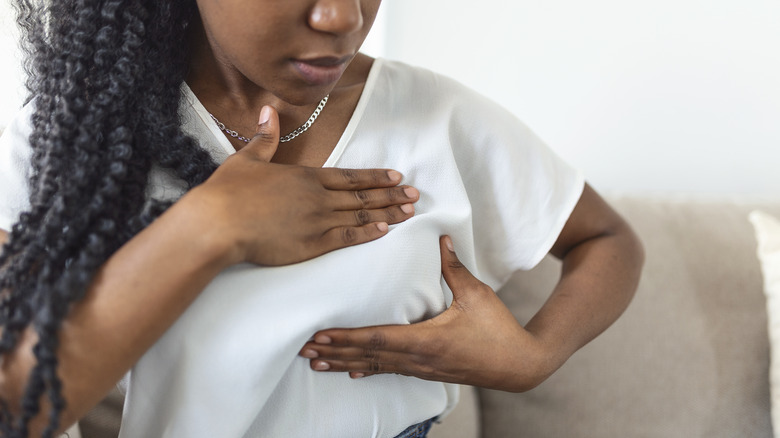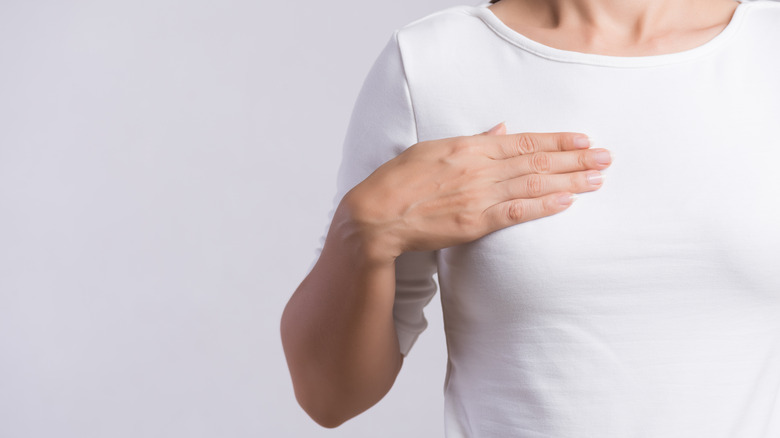What Does A Lump In Your Breast Feel Like?
It's not unusual to feel a bump or lump on your body, like one from a pimple, swollen lymph node, or ingrown hair. But if you feel a lump in your breast, you might be more concerned. While cancer is a real worry, most breast lumps aren't cancerous, according to the Dana-Farber Cancer Institute. Still, it's important to know what to look for and what a cancerous breast lump might feel like.
Breast tissue can naturally feel a bit lumpy, but if you notice something out of the ordinary, it might be cause for concern (via Mayo Clinic). A lump or mass could be due to a breast cyst, which is when a milk duct becomes filled with fluid. This could happen right before your period and go away or get smaller after. Another explanation for a lump could be a fibroadenoma, which is noncancerous and can be attributed to your period, being pregnant, or using hormone therapy.
Sometimes you can experience an abscess in the breast tissue or an injury to the tissue or nerves, which can cause a lump. And sometimes the lump could be due to breast cancer, although this is less likely. In fact, less than 20% of breast lumps are cancerous, notes the Dana-Farber Cancer Institute.
What different types of lumps might feel like
There is actually little scientific evidence that performing breast self-exams will help detect cancer in women of average risk, according to the American Cancer Society. Irregularities in the breast are typically found during activities like bathing or getting dressed. Still, you should know how your breasts regularly look and feel so you can be aware of any changes.
If what you're feeling is a fibroadenoma, it will be able to move easily beneath the skin, rather than feeling fixed in place (via Mayo Clinic). If a lump feels smooth, firm, and round, it might be a cyst. If you're experiencing fibrocystic breast changes, which are often linked to your menstrual cycle, you might feel ridge-like spots or generally lumpy areas in your breasts.
While it's not possible to detect cancer by touch alone, a lump in the breast that's cancerous might feel painless, hard, and unable to be moved (via Healthline). It might appear on the outer parts of your breast, have unusual edges, and get larger over time.
Every breast cancer lump is different, so if you notice any irregularity or changes in your breasts, you should make an appointment with your doctor, even if they don't seem to fit the characteristics common in breast cancer.


